Featured Articles
Andre Ward Is The Second-Best Fighter in the World

Andre Ward Is The Second-Best Fighter in the World – Great boxing is relative to the beholder. Some enjoy exciting fighters like Manny Pacquiao, or give and take sluggers. Others take pleasure in watching pure boxers like Floyd Mayweather do their thing. There is no clear answer for pound for pound supremacy in boxing because unless the best fighters fight, the argument is an exercise in pure opinion. Yet the fundamental purpose for any boxer seeking victory is to hit and not get hit. Historically, thrilling, blood splattering type exchanges have not been a prerequisite for victory. In this sport, those that succeed at being hard to pin down with the greatest amount of skill typically win.
In that case, on Saturday, Carl Froch deserved no shame in losing to the second best fighter in the world. Moving directly behind Mayweather and ahead of Pacquiao, Marquez, or anyone else because of his ability to make damn-good opponents look ordinary, Andre Ward is the second best fighter in the world today. He is leading the next generation of fighters in boxing with class and intelligence in the ring.
During the unanimous decision victory over Froch for the 168 pound championship, ring announcer Antonio Tarver interestingly compared Ward’s fighting style to hall of fame fighter Pernell Whitaker.
Now, I have followed Ward for some time, probably more than most scribes, but never heard such a qualified judgment. Sweet Pea Whitaker was arguably the most gifted defensive fighter in the last fifty years. He slipped and counter-punched his way towards titles in multiple weight classes and pound for pound greatness from the 80s until the mid 1990s. The Whitaker comparison is a compliment to Ward’s ability to make us question his greatness.
At 25-0 with 13 knockouts, some say the 27 year-old Ward has little knockout power, while others praise his elusiveness in the ring, and there are those critics that reduce his accomplishments for various other reasons. Whitaker, a fighter who was never known for KO power, stopped only 17 opponents in 40 victories. In a short span, Ward has followed a similar trajectory but holds a greater knockout percentage. His punches are potent, not powerful.
Ward has said, “Looking for a knockout is like chopping down a tree with a dull axe. I am a sharpshooter. My shots are like lasers. I’ll zap you. I pick and choose when to fire.”
Two things are clear after Ward’s win on Saturday over Froch. One, we watched one of the best fighters in the world make it look easy. Two, he has never been in a close fight as a professional. Think about that last point for a second. Not once has Ward had to squeak out a close decision, or have a come from behind victory. All of his fights have been one-sided, and more recently he’s handled the best the 168 pound division has to offer with ease.
If pound for pound is about dominance and advanced skill over strong competition then Andre Ward is only behind Floyd Mayweather in the mythical rankings.
Today, Manny Pacquiao, the generally recognized number two fighter in the world behind Floyd Mayweather, is not nearly as dominant as Ward at this point in his career. Pacquiao’s achievements, and moving up to 154 pounds from 130 in just 26 months are fantastic. But some of the fights had catch-weight agreements which arguably gave Manny an advantage on fight night, and his last seven opponents, De la Hoya, Hatton, Cotto, Clottey, Margarito, Mosley, and Marquez lost a fight within 26 months before they fought him. Coming off of a loss does not boost confidence. Besides, many boxing media and fans think Pacquiao lost his last fight against Juan Manuel Marquez in November. Boxing is a ‘what have you done for me lately’ sport. Last month Pacquiao’s invincibility slipped.
Meanwhile, in a hotly contested tournament against elite champions, Ward controlled almost every round of his fights.
Ward and Hunter believe in skills above knockouts. Ward, like Whitaker, brought immense skill to the table.
“After he beats his opponent they are never the same and question themselves. They change their trainer, take time off, or lose a step,” Virgil Hunter told me that when Andre Ward was a 13-0 prospect. Long before his fighter was champion, long before Ward shocked Mikkel Kessler to become a super middle weight champion and more recently bewildered Carl Froch on Saturday night en route to the Super Six Tournament victory and super middleweight supremacy, Hunter spoke true.
Ward creates doubt for his opponents. “Nobody wins after they fight us. They lose,” said Hunter. Looking back at Ward’s last five notable opponents (Edison Miranda, Mikkel Kessler, Allan Green, Sakio Bika, and Arthur Abraham) they in fact have not been the same fighter after getting beat by S.O.G.
Miranda switched trainers twice and is 3-2 since Ward. Kessler got a new trainer and his career is on and off because of injury, Green found a new coach and lost by knockout to Glen Johnson, Bika beat a journeyman in his only fight after Ward, and Abraham left the 168 pound division. To Hunter’s point, Andre Ward has not been in a close fight as a professional. He wins – not with power, speed, defense, or quickness but with superior boxing skill.
I covered Ward’s quest for super middleweight supremacy from the beginning. Unexpected for most who follow the sport, there have not been many bumps along the way. The Super Six winner that started as a 5-2 underdog going into the tournament did not get much positive publicity from the media before the competition.
Then, focus was on his slow climb up the ranks instead of his undefeated record. Ward said the most media attention he received before the Super Six Tournament was after he tore the ACL in his left knee in 2008. Not exactly the interest an Olympic gold medalist comes to expect. In fact, Hunter said the knee did not fully heal until weeks before the Froch fight. The trainer said Ward generated power from one leg for more than three years. They needed to ice the knee constantly after training to keep it fresh.
Now all is good and he is healthy, just in time to prepare for the large target that has grown on his back. The Bay Area native has not lost a fight since he was nine years-old. Everyone in or around 168 pounds besides Bernard Hopkins, who Ward has always looked upon as a mentor, wants to break that undefeated streak. But who’s next? Whoever it is must try to make it competitive first against the second best boxer in the world.
Follow Ray on Twitter @RayMarkarian
Andre Ward Is The Second-Best Fighter in the World / Check out more boxing news on video at The Boxing Channel.
Featured Articles
Avila Perspective, Chap. 322: Super Welter Week in SoCal
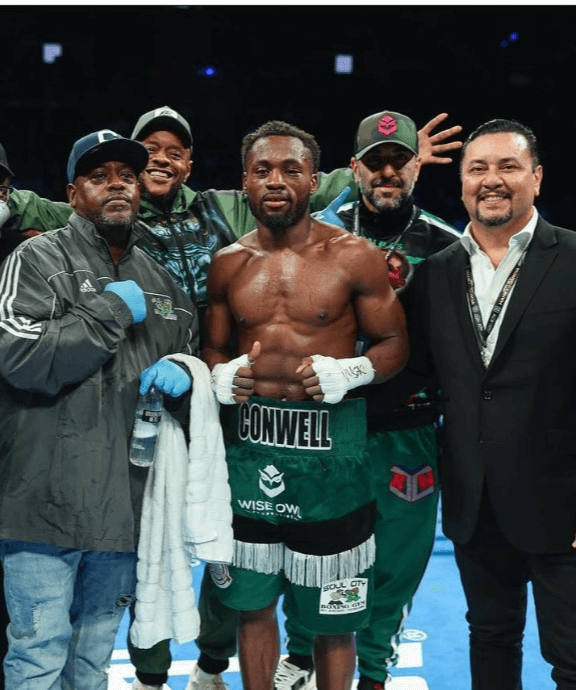
Two below-the-radar super welterweight stars show off their skills this weekend from different parts of Southern California.
One in particular, Charles Conwell, co-headlines a show in Oceanside against a hard-hitting Mexican while another super welter star Sadriddin Akhmedov faces another Mexican hitter in Commerce.
Take your pick.
The super welterweight division is loaded with talent at the moment. If Terence Crawford remained in the division he would be at the top of the class, but he is moving up several weight divisions.
Conwell (21-0, 16 KOs) faces Jorge Garcia Perez (32-4, 26 KOs) a tall knockout puncher from Los Mochis at the Frontwave Arena in Oceanside, Calif. on Saturday April 19. DAZN will stream the Golden Boy Promotions card that also features undisputed flyweight champion Gabriela Fundora. We’ll get to her later.
Conwell might be the best super welterweight out there aside from the big dogs like Vergil Ortiz, Serhii Bohachuk and Sebastian Fundora.
If you are not familiar with Conwell he comes from Cleveland, Ohio and is one of those fighters that other fighters know about. He is good.
He has the James “Lights Out” Toney kind of in-your-face-style where he anchors down and slowly deciphers the opponent’s tools and then takes them away piece by piece. Usually it’s systematic destruction. The kind you see when a skyscraper goes down floor by floor until it’s smoking rubble.
During the Covid days Conwell fought two highly touted undefeated super welters in Wendy Toussaint and Madiyar Ashkeyev. He stopped them both and suddenly was the boogie man of the super welterweight division.
Conwell will be facing Mexico’s taller Garcia who likes to trade blows as most Mexican fighters prefer, especially those from Sinaloa. These guys will be firing H bombs early.
Fundora
Co-headlining the Golden Boy card is Gabriela Fundora (15-0, 7 KOs) the undisputed flyweight champion of the world. She has all the belts and Mexico’s Marilyn Badillo (19-0-1, 3 KOs) wants them.
Gabriela Fundora is the sister of Sebastian Fundora who holds the men’s WBC and WBO super welterweight world titles. Both are tall southpaws with power in each hand to protect the belts they accumulated.
Six months ago, Fundora met Argentina’s Gabriela Alaniz in Las Vegas to determine the undisputed flyweight champion. The much shorter Alaniz tried valiantly to scrap with Fundora and ran into a couple of rocket left hands.
Mexico’s Badillo is an undefeated flyweight from Mexico City who has battled against fellow Mexicans for years. She has fought one world champion in Asley Gonzalez the current super flyweight world titlist. They met years ago with Badillo coming out on top.
Does Badillo have the skill to deal with the taller and hard-hitting Fundora?
When a fighter has a six-inch height advantage like Fundora, it is almost impossible to out-maneuver especially in two-minute rounds. Ask Alaniz who was nearly decapitated when she tried.
This will be Badillo’s first pro fight outside of Mexico.
Commerce Casino
Kazakhstan’s Sadriddin Akhmedov (15-0, 13 KOs) is another dangerous punching super welterweight headlining a 360 Promotions card against Mexico’s Elias Espadas (23-6, 16 KOs) on Saturday at the Commerce Casino.
UFC Fight Pass will stream the 360 Promotions card of about eight bouts.
Akhmedov is another Kazakh puncher similar to the great Gennady “GGG” Golovkin who terrorized the middleweight division for a decade. He doesn’t have the same polish or dexterity but doesn’t lack pure punching power.
It’s another test for the super welterweight who is looking to move up the ladder in the very crowded 154-pound weight division. 360 Promotions already has a top contender in Ukraine’s Serhii Bohachuk who nearly defeated Vergil Ortiz a year ago.
Could Bohachuk and Akhmedov fight each other if nothing else materializes?
That’s a question for another day.
Fights to Watch
Sat. DAZN 5 p.m. Charles Conwell (21-0, 16 KOs) vs. Jorge Garcia Perez (32-4, 26 KOs); Gabriela Fundora (15-0) vs Marilyn Badillo (19-0-1).
Sat. UFC Fight Pass 6 p.m. Sadriddin Akhmedov (15-0) vs Elias Espadas (23-6).
To comment on this story in the Fight Forum CLICK HERE
Featured Articles
TSS Salutes Thomas Hauser and his Bernie Award Cohorts
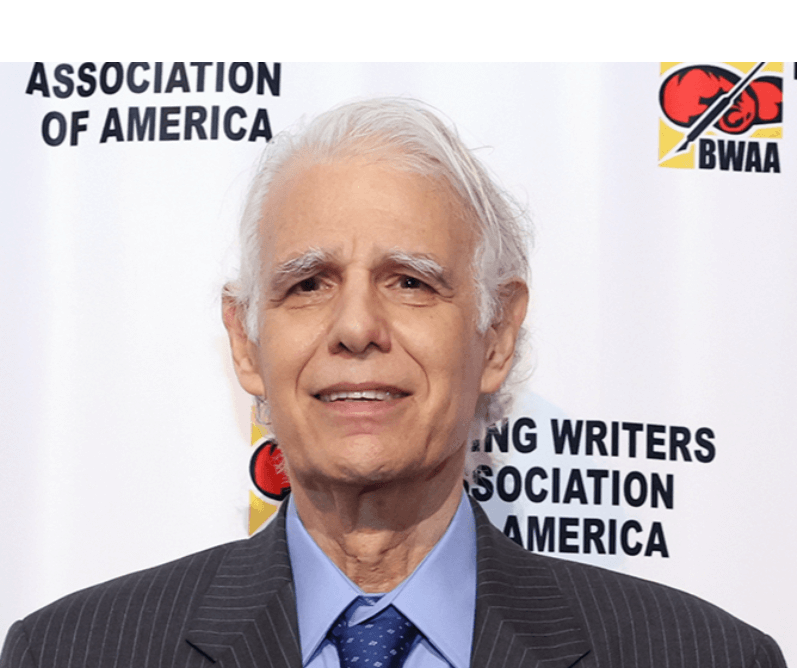
The Boxing Writers Association of America has announced the winners of its annual Bernie Awards competition. The awards, named in honor of former five-time BWAA president and frequent TSS contributor Bernard Fernandez, recognize outstanding writing in six categories as represented by stories published the previous year.
Over the years, this venerable website has produced a host of Bernie Award winners. In 2024, Thomas Hauser kept the tradition alive. A story by Hauser that appeared in these pages finished first in the category “Boxing News Story.” Titled “Ryan Garcia and the New York State Athletic Commission,” the story was published on June 23. You can read it HERE.
Hauser also finished first in the category of “Investigative Reporting” for “The Death of Ardi Ndembo,” a story that ran in the (London) Guardian. (Note: Hauser has owned this category. This is his 11th first place finish for “Investigative Reporting”.)
Thomas Hauser, who entered the International Boxing Hall of Fame with the class of 2019, was honored at last year’s BWAA awards dinner with the A.J. Leibling Award for Outstanding Boxing Writing. The list of previous winners includes such noted authors as W.C. Heinz, Budd Schulberg, Pete Hamill, and George Plimpton, to name just a few.
The Leibling Award is now issued intermittently. The most recent honorees prior to Hauser were Joyce Carol Oates (2015) and Randy Roberts (2019).
Roberts, a Distinguished Professor of History at Purdue University, was tabbed to write the Hauser/Leibling Award story for the glossy magazine for BWAA members published in conjunction with the organization’s annual banquet. Regarding Hauser’s most well-known book, his Muhammad Ali biography, Roberts wrote, “It is nearly impossible to overestimate the importance of the book to our understanding of Ali and his times.” An earlier book by Hauser, “The Black Lights: Inside the World of Professional Boxing,” garnered this accolade: “Anyone who wants to understand boxing today should begin by reading ‘The Black Lights’.”
A panel of six judges determined the Bernie Award winners for stories published in 2024. The stories they evaluated were stripped of their bylines and other identifying marks including the publication or website for which the story was written.
Other winners:
Boxing Event Coverage: Tris Dixon
Boxing Column: Kieran Mulvaney
Boxing Feature (Over 1,500 Words): Lance Pugmire
Boxing Feature (Under 1,500 Words): Chris Mannix
The Dixon, Mulvaney, and Pugmire stories appeared in Boxing Scene; the Mannix story in Sports Illustrated.
The Bernie Award recipients will be honored at the forthcoming BWAA dinner on April 30 at the Edison Ballroom in the heart of Times Square. (For more information, visit the BWAA website). Two days after the dinner, an historic boxing tripleheader will be held in Times Square, the logistics of which should be quite interesting. Ryan Garcia, Devin Haney, and Teofimo Lopez share top billing.
To comment on this story in the Fight Forum CLICK HERE
Featured Articles
Mekhrubon Sanginov, whose Heroism Nearly Proved Fatal, Returns on Saturday
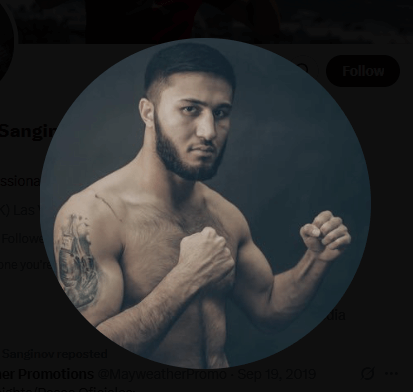
To say that Mekhrubon Sanginov is excited to resume his boxing career would be a great understatement. Sanginov, ranked #9 by the WBA at 154 pounds before his hiatus, last fought on July 8, 2022.
He was in great form before his extended leave, having scored four straight fast knockouts, advancing his record to 13-0-1. Had he remained in Las Vegas, where he had settled after his fifth pro fight, his career may have continued on an upward trajectory, but a trip to his hometown of Dushanbe, Tajikistan, turned everything haywire. A run-in with a knife-wielding bully nearly cost him his life, stalling his career for nearly three full years.
Sanginov was exiting a restaurant in Dushanbe when he saw a man, plainly intoxicated, harassing another man, an innocent bystander. Mekhrubon intervened and was stabbed several times with a long knife. One of the puncture wounds came perilously close to puncturing his heart.
“After he stabbed me, I ran after him and hit him and caught him to hold for the police,” recollects Sanginov. “There was a lot of confusion when the police arrived. At first, the police were not certain what had happened.
“By the time I got to the hospital, I had lost two liters of blood, or so I was told. After I was patched up, one of the surgeons said to me, ‘Give thanks to God because he gave you a second life.’ It is like I was born a second time.”

“I was in the wrong place at the wrong time. It could have happened in any city,” he adds. (A story about the incident on another boxing site elicited this comment from a reader: “Good man right there. World would be a better place if more folk were willing to step up when it counts.”)
Sanginov first laced on a pair of gloves at age 10 and was purportedly 105-14 as an amateur. Growing up, the boxer he most admired was Roberto Duran. “Muhammad Ali will always be the greatest and [Marvin] Hagler was great too, but Duran was always my favorite,” he says.
During his absence from the ring, Sanginov married a girl from Tajikistan and became a father. His son Makhmud was born in Las Vegas and has dual citizenship. “Ideally,” he says, “I would like to have three more children. Two more boys and the last one a daughter.”
He also put on a great deal of weight. When he returned to the gym, his trainer Bones Adams was looking at a cruiserweight. But gradually the weight came off – “I had to give up one of my hobbies; I love to eat,” he says – and he will be resuming his career at 154. “Although I am the same weight as before, I feel stronger now. Before I was more of a boy, now I am a full-grown man,” says Sanginov who turned 29 in February.
He has a lot of rust to shed. Because of all those early knockouts, he has answered the bell for only eight rounds in the last four years. Concordantly, his comeback fight on Saturday could be described as a soft re-awakening. Sanginov’s opponent Mahonri Montes, an 18-year pro from Mexico, has a decent record (36-10-2, 25 KOs) but has been relatively inactive and is only 1-3-1 in his last five. Their match at Thunder Studios in Long Beach, California, is slated for eight rounds.
On May 10, Ardreal Holmes (17-0) faces Erickson Lubin (26-2) on a ProBox card in Kissimmee, Florida. It’s an IBF super welterweight title eliminator, meaning that the winner (in theory) will proceed directly to a world title fight.
Sanginov will be watching closely. He and Holmes were scheduled to meet in March of 2022 in the main event of a ShoBox card on Showtime. That match fell out when Sanginov suffered an ankle injury in sparring.
If not for a twist of fate, that may have been Mekhrubon Sanginov in that IBF eliminator, rather than Ardreal Holmes. We will never know, but one thing we do know is that Mekhrubon’s world title aspirations were too strong to be ruined by a knife-wielding bully.
To comment on this story in the Fight Forum CLICK HERE
-
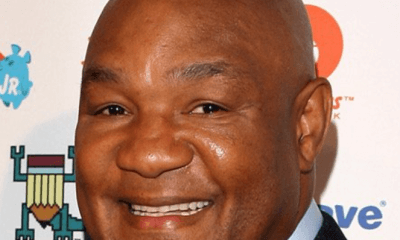
 Featured Articles4 weeks ago
Featured Articles4 weeks agoBernard Fernandez Reflects on His Special Bond with George Foreman
-
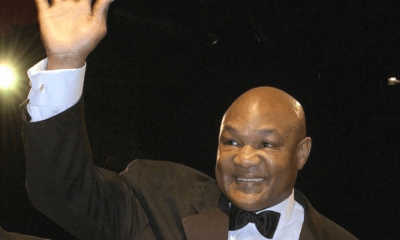
 Featured Articles4 weeks ago
Featured Articles4 weeks agoA Paean to George Foreman (1949-2025), Architect of an Amazing Second Act
-
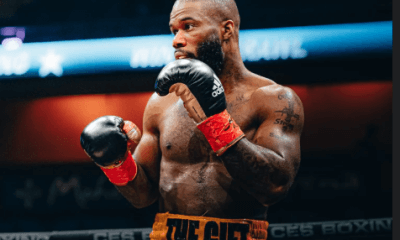
 Featured Articles4 weeks ago
Featured Articles4 weeks agoSpared Prison by a Lenient Judge, Chordale Booker Pursues a World Boxing Title
-
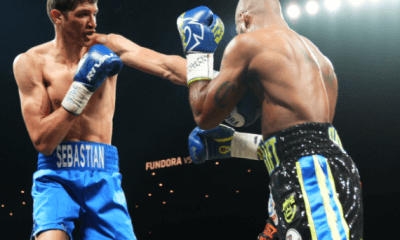
 Featured Articles4 weeks ago
Featured Articles4 weeks agoSebastian Fundora TKOs Chordale Booker in Las Vegas
-
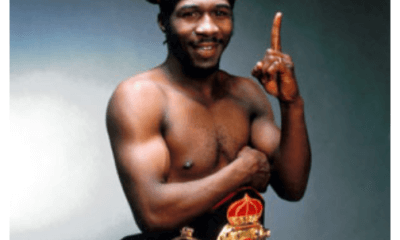
 Featured Articles3 weeks ago
Featured Articles3 weeks agoBoxing Odds and Ends: The Wacky and Sad World of Livingstone Bramble and More
-
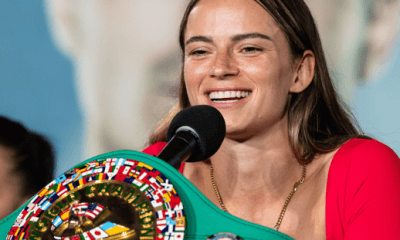
 Featured Articles4 weeks ago
Featured Articles4 weeks agoAvila Perspective, Chap. 318: Aussie Action, Vegas and More
-
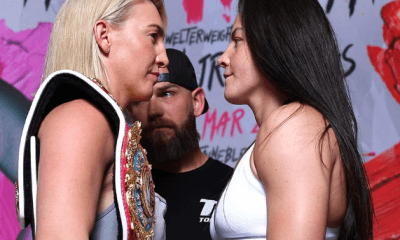
 Featured Articles3 weeks ago
Featured Articles3 weeks agoAvila Perspective, Chap. 319: Rematches in Las Vegas, Cancun and More
-

 Featured Articles3 weeks ago
Featured Articles3 weeks agoRingside at the Fontainebleau where Mikaela Mayer Won her Rematch with Sandy Ryan
















